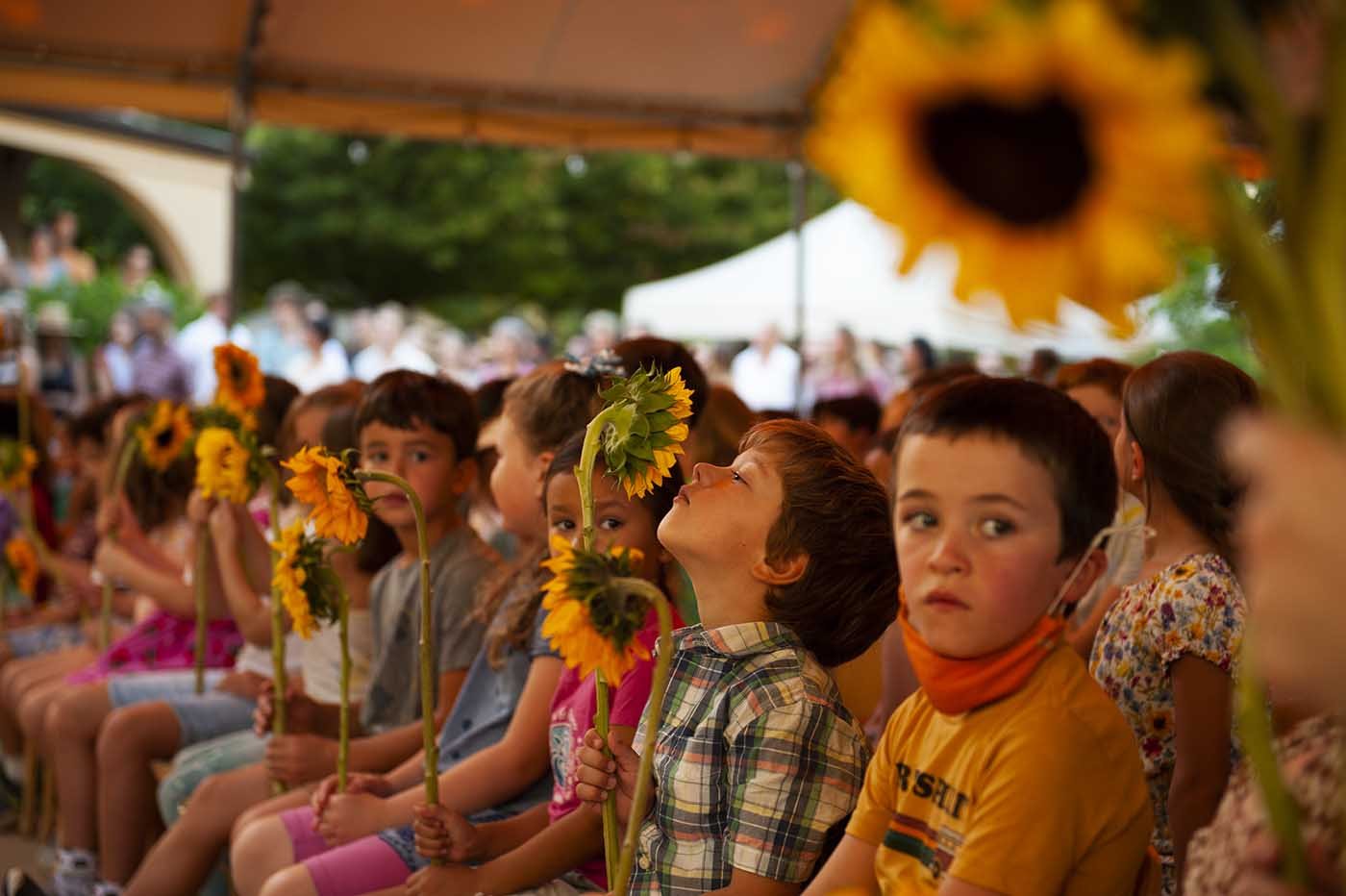First Grade Curriculum
The First Grader learns through stories, which lays the foundation for future academics.
The core curriculum in First Grade is a pictorial and phonetic introduction to letters; reading approached through writing; letter blends and word families; qualities of numbers; introduction of the four processes in Arithmetic; multiplication tables; and form drawing. Beyond the core curriculum carried by the class teacher, First Graders also receive instruction in Spanish, German, Handwork, Eurythmy, Games and Movement, and Music.
The motif of First Grade is fairytales and nature stories—tales from around the world. Stories are the vehicle for the teaching of language arts. The year begins with an introduction to individual letters through imaginative storytelling in which the teacher fosters the students’ auditory memory, builds their capacity to create mental images and visual memory, helps them develop a rich vocabulary, and imbues them with a love of spoken and written language. The students retell the stories through speech, drama, art, and writing as the year progresses.
When they are well-acquainted with the letters and their sounds, the students write words, sentences, and verses in their Morning Lesson books. The content comes from the stories they have heard or from experiences they have shared, like walks in nature with their class. Students read aloud what they have written, together at first and then individually.
In Math, images and stories encourage a love of numbers, enhanced by rhythmic and counting activities. Song and movement activities introduce the students to multiplication. The children learn all four operational processes (addition, subtraction, multiplication, and division) with an emphasis on the relationship between the processes, presented in story form that includes problem-solving. Our Mathematics approach is multisensory: the students learn through experiencing imaginative pictures and through practical applications, like the use of manipulatives.
Our campus offers ample opportunities for nature study at every age. Simple stories in First Grade bring the natural world to life. Students take frequent outdoor walks and observe the change of seasons, which we celebrate through festivals and by collecting natural objects for the classroom nature table and for use in crafts. The students experience the rhythm of the Earth, the stars, and the planets as an integral part of life. These sensory experiences develop capacities for future scientific observation and engagement. Students' exposure to the use and conservation of natural resources lays a foundation for later studies of Earth Science and responsible stewardship in the upper grades.

